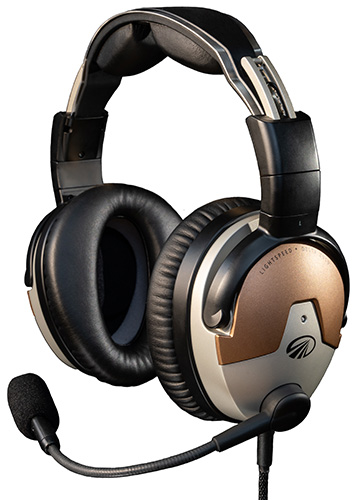If you’ve ever had a routine hearing test, you probably wore a headset and were told to raise your hand whenever you heard sounds. The hearing exam for pilots is very different: it tests their ability to hear the spoken word, because the ability to hear language accurately—directions from ATC and information from flight crew—is critical to flying safely. In fact, in a review of the NASA Aviation Safety Reporting System (ASRS), U.S. researchers found that more than 70 percent of incident reports involved problems with information transfer, primarily related to voice communications. Many factors can play into communication issues, such as ambiguous messages and language differences, but the ability to hear speech accurately is the foundation for successful communication.
The ability to understand speech in given conditions is called “intelligibility.” Intelligibility depends on several factors: sound level of the speech (it must be loud enough and not too loud), quality of the speech signal, and background noise. There is interplay between these factors: for example, if there’s interference affecting the comms signal from ATC, it’s even more important to keep background noise from further degrading the pilot’s ability to hear accurately. We want to control these factors to improve the “signal-to-noise ratio.”
In a small plane, the most consistent and controllable factor in intelligibility is background noise in the 50–300 Hz frequency range, which comes from the aircraft engine, propeller(s), and other equipment and from air interacting with the plane. Cockpit noise can range from 50 to 120 decibels (dBAs). The ability to accurately recognize words drops rapidly at noise levels above 85 dBA. (The U.S. Occupational Health and Safety Administration (OSHA) also requires employers to protect workers from noise exposure at or above 85 decibels averaged over eight working hours.)
In an inherently noisy environment, there are two ways to improve the signal-to-noise ratio: crank up the signal or reduce the noise. Cranking up comms is not a good option for several reasons. First, setting them loud enough to overcome cockpit noise can actually reduce intelligibility. (It fails the “loud enough but not too loud” test.) Second, more loud noise adds to pilot fatigue, which can reduce pilot performance and, hence, safety. Third, adding to the noise increases risk of hearing loss over time.
Reducing noise through headphones is a better way to improve intelligibility in the cockpit, and numerous studies have shown that Active Noise Reduction (ANR) headphones are best. ANR headsets cancel out background noise, effectively eliminating selected frequencies of noise within the ear cup of the headset. They are extremely effective at cancelling constant, low frequency noises such as the engine rumble in an aircraft.
Research has shown that ANR headphones can improve intelligibility between 5 and 12 percent in an aircraft environment. By cancelling low-frequency noise, ANR headsets allow pilots to hear comms more clearly without raising the volume, reducing pilot fatigue, and protecting hearing. Another benefit of this improved intelligibility is that pilots have less need for ATC to read back instructions, lowering ATC workload and freeing the pilot to focus on other aspects of safe flying. And with additional integrated features such as Bluetooth connection and automatic muting of music for incoming comms, ANR headsets can also allow pilots to enjoy music at a safe volume and without compromising vital communication.
A ten or twelve percent improvement in intelligibility may not seem like a lot but hearing a single word can make the difference between a crash and a safe landing. Consider the case of a Boeing 747 on an approach into Nairobi, Kenya, in the 1970s. ATC cleared the plane to “descend seven five zero zero feet” (7,500 ft), but both pilots heard “five zero zero zero feet” (5,000 ft), an altitude 327 ft below the altitude of the airport. Luckily, the plane broke out of the clouds in time for the crew to see what was happening and pull up into a climb. But they still came within 70 feet of hitting the ground. This incident had a happy ending, but there are others that didn’t.
Another thing to consider: A military study found that pilots with pre-existing high-frequency hearing losses show substantial impairments in speech intelligibility, which in turn can affect flying safety. They concluded that, by improving intelligibility, ANR could help compensate for these hearing losses. For most people, hearing will decline as we age, starting as early as our thirties or forties. So, by using ANR to help compensate for mild hearing loss and to protect our hearing, we can extend our safe flying years. And that’s a happy ending for every added day in the air.

Lightspeed Delta Zulu®
Lightspeed creates products to protect and save lives and manufactures the best, most premium aviation headsets for pilots. The Lightspeed Delta Zulu® ANR headset is built for pilots who understand the importance of comfort, safety, and control. It includes our best ANR to date, with the superior comfort and durability you expect from a Zulu series headset from Lightspeed, while also introducing groundbreaking smart technology that has saved the lives of pilots and their passengers.
Try for yourself! The Lightspeed Delta Zulu has a 30-day Money Back Guarantee















I remember my first time trying a headset with ANR, game changer for sure!
Since then, understanding ATC was never a problem!
I used to fly with those basic headsets flight school have hanging around for a while thinking that was the norm.
Glad to be on this side now!
I remember in the early days of flight training using a worn out headset rented through the flight school. I remember distinctly having such a hard time hearing ATC over the engine and having to crank the volume way up to even get close to hearing what my CFI was telling me to do. Then I got my Zulu 3 headset after I got my Private Pilot and my world seemed to open up. I could finally hear the ATC and passengers were super clear. The engine noise all but disappeared and I found myself not nearly as tired on long trips anymore.
Today I routinely fly a few hundred miles as a regular trip and could not imagine doing this without ANR to not only protect my hearing in the long term but to allow me to hear what ATC is saying in super busy airspace. The only “downside” is having to relearn what your engine should sound like as it will be much quieter that you are used to if you don’t currently have ANR, but that is a small price to pay.
I remember in the early days of flight training using a worn out headset rented through the flight school. I remember distinctly having such a hard time hearing ATC over the engine and having to crank the volume way up to even get close to hearing what my CFI was telling me to do. Then I got my Zulu 3 headset after I got my Private Pilot and my world seemed to open up. I could finally hear the ATC and passengers were super clear. The engine noise all but disappeared and I found myself not nearly as tired on long trips anymore.
Today I routinely fly a few hundred miles as a regular trip and could not imagine doing this without ANR to not only protect my hearing in the long term but to allow me to hear what ATC is saying in super busy airspace. The only “downside” is having to relearn what your engine should sound like as it will be much quieter that you are used to if you don’t currently have ANR.
As an Air Traffic Controller I can tell you this is a big problem with all types of aircraft. We can hear the engine/cockpit noise as well when pilots are keying up and we have no way of reducing that. As a pilot, this article is very true indeed because I have had the same issue talking to ATC from this side as well without an ANR headset. A quality headset will reduce ambient noise for both sides of the mic.
Since I upgraded to the Lightspeed Sierra then the Zulu3 I haven’t had any issues hearing or even speaking to ATC. They are a great headset and worth every penny. Safety is key and the benefits of a great headset go way beyond the cost.
I really appreciate the added details of ways to improve the signal-to-noise ratio in cranking up the signal vs. reducing the noise. I found myself going, “Huh, I didn’t know that.”
Every time I put on my Lightspeed headset, I breathe a sigh of relief. It gives me confidence and reliability that I never found in other headsets.
I struggled with being able to hear all the radio communication in my 1950 Piper Pacer. The radio is kind of weak and being that the aircraft is fabric, the noise is a lot greater than many other aircraft. When I put on the Delta Zulu for the first time, it was like being in a completely different aircraft. The aircraft noise was so different that I had to re-learn what the RPM settings sounded like again. I was also able to hear the controllers and other aircraft SO much better and clearer than before. I’m so grateful for the Delta Zulu, it has made me both a more confident and safer pilot.